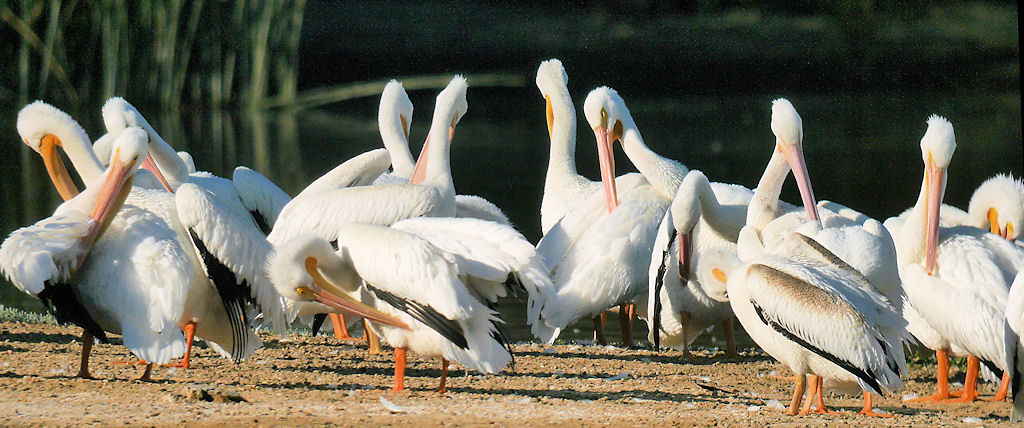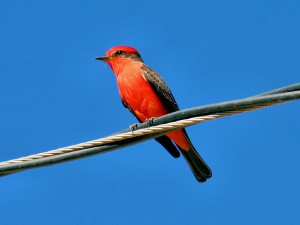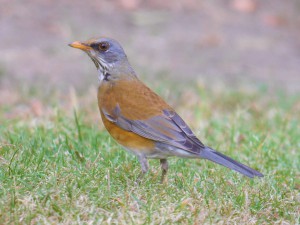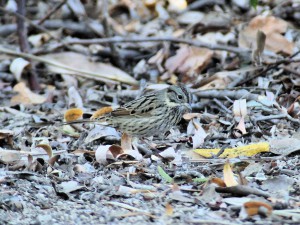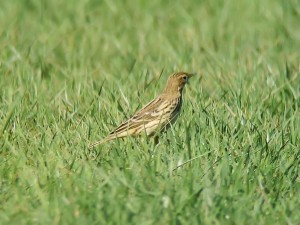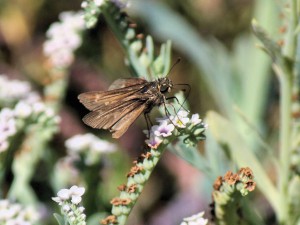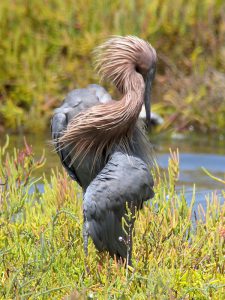Christmas arrived early in Orange County this weekend. Jeff Bray, a local birder, made the find of a lifetime: an Olive-backed Pipit (Anthus hodgsoni). Jeff found this bird at Yorba Regional Park. It may not sound like much, but it’s a really big deal.
Olive-backed Pipit – Previous Continental Records
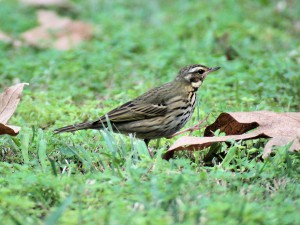
Olive-backed Pipit, Yorba Regional Park, 01-NOV-14
For starters, there were only 3 previous records of this species in North America away from Alaska. (Here, we define North America geographically as including Mexico – not the birding definition). Washoe, Nevada hosted the first continental Olive-backed Pipit in 1967. Subsequent records came from Baja in 1996, and on the Farallon Islands in California in 1998. So the take-home message is, these guys don’t show up very often! Whenever a call like this goes out, birders do their version of a ‘flash mob’! The Yorba Regional Park mob on Saturday was very impressive!
I was among the first 20 birders there, but soon birders began arriving from all over the map in minutes. And soon it was a who’s who of southern California birders. And why not? This little Olive-backed Pipit really put on a show! It led us a merry dance at first, flying from place to place within the park. Frequently, it landed in heavy cover and skulked around. Sometimes the only visible indication it was there was movement of the vegetation it was walking under. But eventually, it came out on the lawn between the picnic tables and fed calmly for about an hour. Everyone there got crippling looks! In fact, the bird was remarkably cooperative, seeming oblivious to the camera shutter whir and quiet conversation of excited birders. Continue reading →


